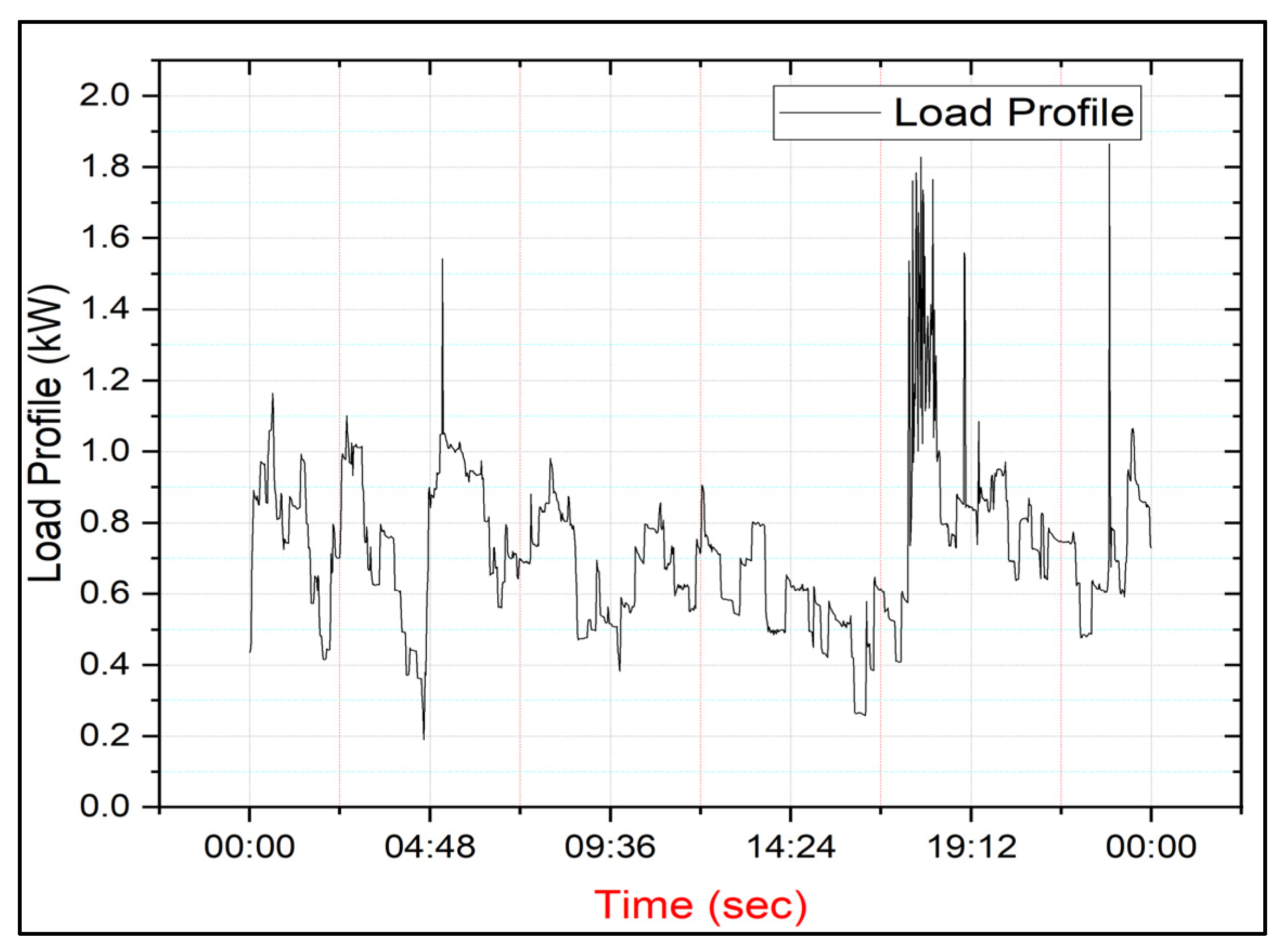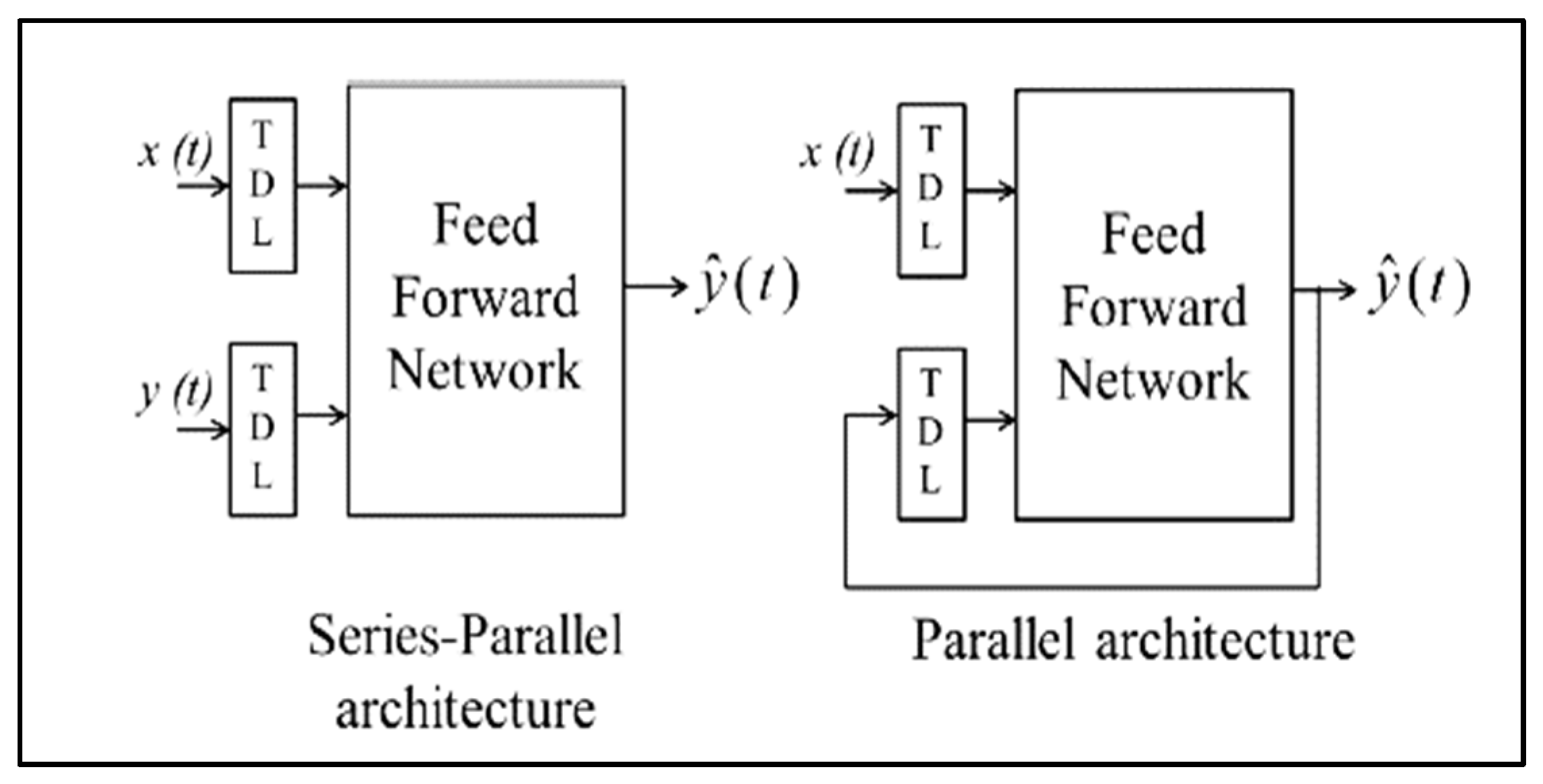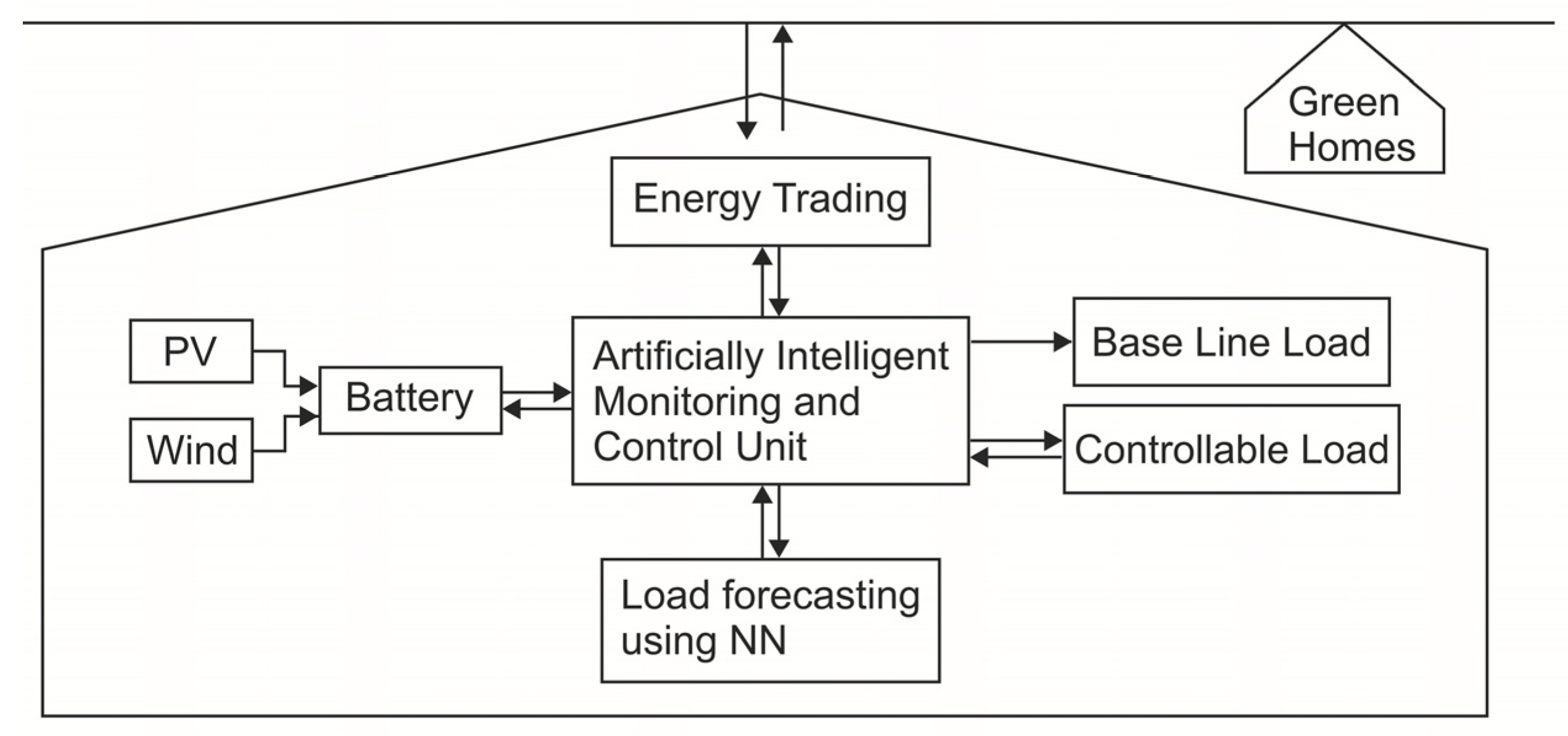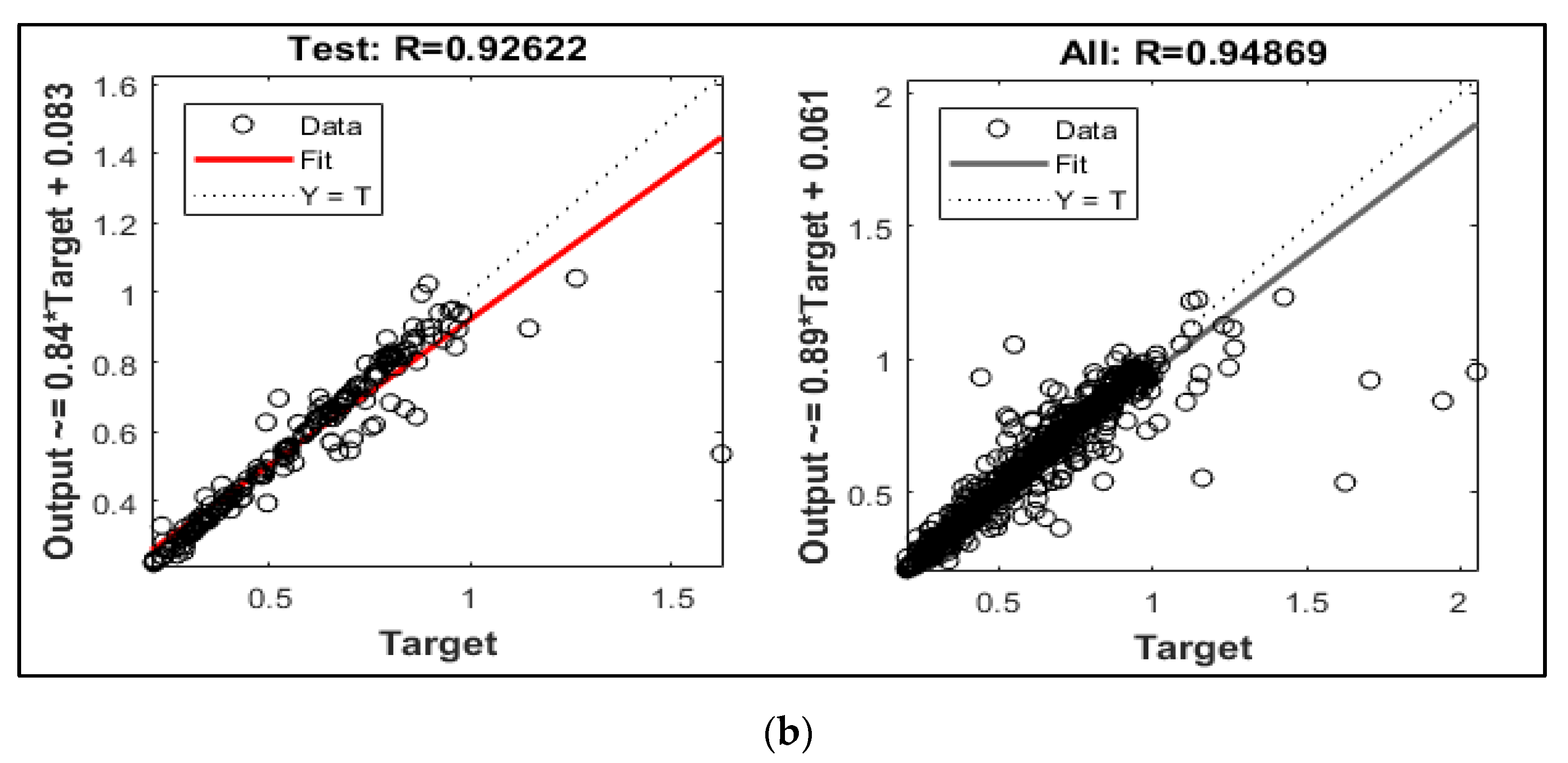Load Forecasting of an Optimized Green Residential System Using Machine Learning Algorithm †
Abstract
:1. Introduction
2. Research Flow Diagram
3. Methodology and Design
3.1. Data Acquisition
3.2. Neural Network Model
3.3. Energy Management System
4. Results and Discussion
5. Conclusions
Conflicts of Interest
References
- De Andrade, L.C.M.; Oleskovicz, M.; Santos, A.Q.; Coury, D.V.; Fernandes, R.A.S. Very Short-Term Load Forecasting Based on NARX Recurrent Neural Networks. In Proceedings of the 2014 IEEE PES General Meeting | Conference & Exposition, National Harbor, MD, USA, 27–31 July 2014. [Google Scholar] [CrossRef]
- Wang, Y.; Zhang, N.; Chen, X. A Short-Term Residential Load Forecasting Model Based on Lstm Recurrent Neural Network Considering Weather Features. Energies 2020, 14, 2737. [Google Scholar] [CrossRef]
- Mustapa, R.F.; Dahlan, N.Y.; Yassin, I.M.; Hamizah Mohd Nordin, A.; Mahadan, M.E.; Mohamad, S. Particle Swarm Optimization for NARX-ANN Baseline Energy Modelling in Educational Buildings. In Proceedings of the 2019 IEEE International Conference on Automatic Control and Intelligent Systems (I2CACIS), Selangor, Malaysia, 29 June 2019; pp. 19–24. [Google Scholar] [CrossRef]
- Mohanty, S.; Patra, P.K.; Sahoo, S.S. Prediction of Global Solar Radiation Using Nonlinear Auto Regressive Network with Exogenous Inputs (Narx). In Proceedings of the 2015 39th National Systems Conference (NSC), Greater Noida, India, 14–16 December 2015. [Google Scholar] [CrossRef]
- Boussaada, Z.; Curea, O.; Remaci, A.; Camblong, H.; Bellaaj, N.M. A Nonlinear Autoregressive Exogenous (NARX) Neural Network Model for the Prediction of the Daily Direct Solar Radiation. Energies 2018, 11, 620. [Google Scholar] [CrossRef] [Green Version]
- Farsi, B.; Amayri, M.; Bouguila, N.; Eicker, U. On Short-Term Load Forecasting Using Machine Learning Techniques and a Novel Parallel Deep LSTM-CNN Approach. IEEE Access 2021, 9, 31191–31212. [Google Scholar] [CrossRef]
- Krishna Prakash, N.; Prasanna Vadana, D. Machine Learning Based Residential Energy Management System. 2017 IEEE Int. Conf. Comput. Intell. Comput. Res. 2018. [Google Scholar] [CrossRef]
- Jamil, F.; Iqbal, N.; Ahmad, S.; Kim, D. Peer-to-Peer Energy Trading Mechanism Based on Blockchain and Machine Learning for Sustainable Electrical Power Supply in Smart Grid. IEEE Access 2021, 9, 39193–39217. [Google Scholar] [CrossRef]
- Open Data Pakistan. Available online: https://opendata.com.pk/showcase/pakistan-residential-electricity-consumption-dataset (accessed on 15 August 2021).








| Types of NARX | MSE | MAPE% | Regression |
|---|---|---|---|
| NARX 1 | 0.00323 | 0.226 | 96.93% |
| NARX 2 | 0.00545 | 0.293 | 94.86% |
Publisher’s Note: MDPI stays neutral with regard to jurisdictional claims in published maps and institutional affiliations. |
© 2021 by the authors. Licensee MDPI, Basel, Switzerland. This article is an open access article distributed under the terms and conditions of the Creative Commons Attribution (CC BY) license (https://creativecommons.org/licenses/by/4.0/).
Share and Cite
Zahoor, N.; Ullah, I.; Dogar, A.A.; Ahmed, B. Load Forecasting of an Optimized Green Residential System Using Machine Learning Algorithm. Eng. Proc. 2021, 12, 22. https://doi.org/10.3390/engproc2021012022
Zahoor N, Ullah I, Dogar AA, Ahmed B. Load Forecasting of an Optimized Green Residential System Using Machine Learning Algorithm. Engineering Proceedings. 2021; 12(1):22. https://doi.org/10.3390/engproc2021012022
Chicago/Turabian StyleZahoor, Nabeel, Irfan Ullah, Abid Ali Dogar, and Burhan Ahmed. 2021. "Load Forecasting of an Optimized Green Residential System Using Machine Learning Algorithm" Engineering Proceedings 12, no. 1: 22. https://doi.org/10.3390/engproc2021012022
APA StyleZahoor, N., Ullah, I., Dogar, A. A., & Ahmed, B. (2021). Load Forecasting of an Optimized Green Residential System Using Machine Learning Algorithm. Engineering Proceedings, 12(1), 22. https://doi.org/10.3390/engproc2021012022







